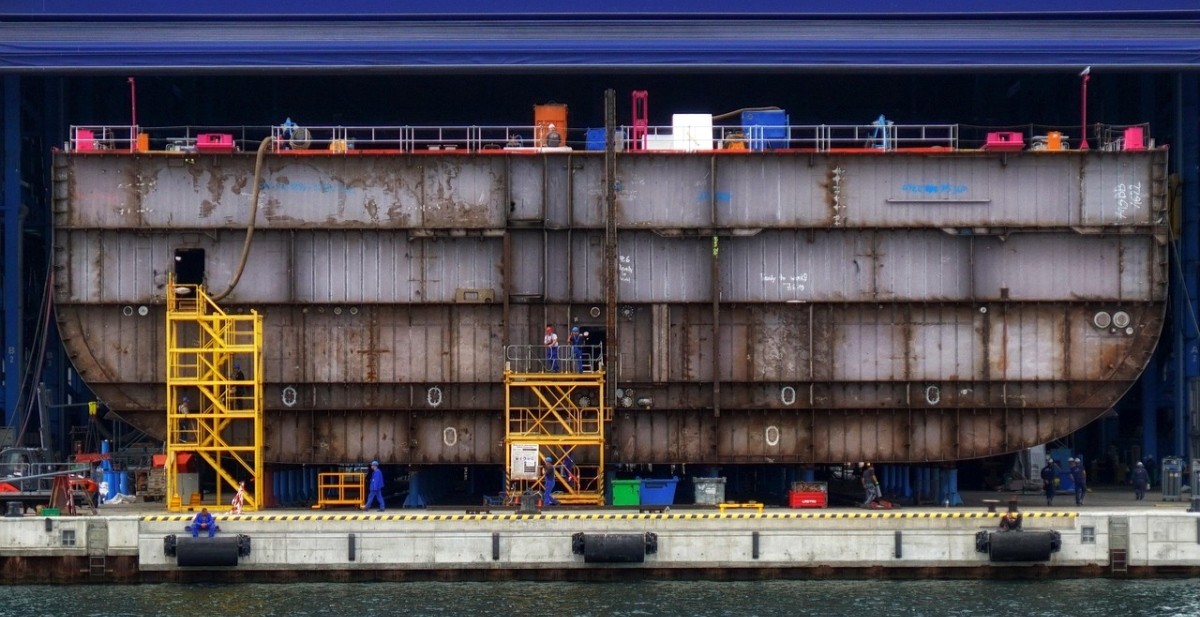Shipbuilding's role in a greener maritime future

More new ships are being built for alternative fuels, but the existing fleet is lagging in its readiness
By Carly Fields
Over half of the global ship orderbook by gross tonnage comprises vessels capable of running on alternative fuels, but less than 10% of the existing global fleet can utilise these greener technologies, demonstrating the challenges in ‘going for green’.
The Role of Shipbuilding in Maritime Decarbonisation: Impacts of Technology Developments and Policy Measures report from the OECD highlights a preference for "fuel optionality”, with LNG-capable vessels dominating new orders.
LNG-capable vessels account for 37% of the orderbook by gross tonnage, followed by methanol-capable (9.7%) and ammonia-capable (0.55%) ships. Emerging technologies such as battery, hybrid, or nuclear propulsion are also gaining traction for specific vessel types, though their overall uptake remains below 1%.
A significant concentration in design and construction capabilities is evident, with Chinese shipyards representing 47% of the orderbook for alternative fuel-capable vessels in Compensated Gross Tonnage (CGT), closely followed by Korea at 42%. "The building of methanol and ammonia capable ships is mainly concentrated in Korea, China and Japan, while ships capable of running on biofuels show a more diverse set of producer countries and manufacturers," says the report. Interestingly, European engine designers play a dominant role, supplying over 65% of the alternative fuel-capable fleet and orderbook.
Retrofitting existing vessels with energy-saving technologies (ESTs) and converting them to alternative fuels has seen a notable increase, more than doubling since 2020.
However, these activities still account for less than 1% of total retrofits and repairs. European and Chinese yards are leading in alternative fuel conversions, with Chinese yards also prominent in propeller and hull EST retrofits. "Alternative fuel conversions focus on passenger vessels, EST retrofits on bulk carriers and containerships," explain the report authors Emilie Berger, a junior policy analyst, and Laurent Daniel, a senior economist, at the OECD. A potential bottleneck is also identified: "Fuel conversions take significantly longer to complete than other retrofits (+45 days), hinting at potential capacity bottlenecks as demand grows".
Innovation slowdown
The capacity of shipyards to construct low/zero-emission vessels is growing. In 2024, 82 builders were constructing alternative fuel-capable vessels. Over the past decade, the share of active yards capable of building such vessels has increased, ranging between 7% and 36% for different ship types in 2023. However, this progress is uneven. "Bulk carriers and tankers lag in adoption, while a significant portion of yards build alternative fuel capable containerships and cruise ships," note Berger and Daniel. LNG currently leads in construction, with methanol also experiencing increased growth.
A concerning trend highlighted in the report is the slowing yearly growth in patenting activity for low-carbon maritime technologies. "Despite the growing pressure to decarbonise the maritime sector, the yearly share of low-carbon patenting activity in maritime technologies peaked between 2010 and 2015," state the authors.
While the EU and Japan have historically led in patent filings in this domain, China has significantly increased its patenting activity in the last five years, surpassing other key innovators.
The commitment of major shipbuilding companies to decarbonisation efforts also varies. The report found that "seven out of 15 studied major shipbuilding companies do not have a 2050 net-zero emissions target, indicating that commitments vary by region". Nevertheless, many shipbuilding companies are actively promoting low/zero-emission vessel development through technology demonstration projects and are placing emphasis on digitalisation and 'Just Transition' strategies.
The availability of alternative fuel storage and bunkering infrastructure is crucial, yet "global plans for alternative fuel storage and bunkering are progressing, but implementation remains limited". Berger and Daniel observe that "methanol and ammonia infrastructure for shipping is mostly at the planning stage, with major uncertainties around fuel production, supply chains, port readiness, and safety standards".
Policy and financial levers
Government policies are seen as essential enablers, but the report finds that they predominantly focus on the shipping sector rather than shipbuilding directly. "While over 80% of assessed jurisdictions are implementing maritime decarbonisation strategies, most of these focus on the shipping sector, and less on the shipbuilding industry," state Berger and Daniel. Furthermore, "5 out of 25 countries do not have a dedicated decarbonisation strategy for the maritime sector, potentially causing an inconsistent policy mix and enforcement of measures".
Governments currently tend to emphasise support programs over mandatory measures. "Most countries focus their policy measures on strategies, roadmaps and a spectrum of government-backed support programmes to support decarbonisation”, the authors note. Research and development (R&D) and alternative fuel uptake and supply are the most common policy target areas, while "binding measures, such as fuel standards or carbon pricing mechanisms are limited".
Financing the transition remains a significant hurdle. The report suggests that "increased government guidance can support green finance practices".
While some major shipbuilders utilise green finance instruments, this practice is not widespread.
Berger and Daniel conclude that "while some jurisdictions have implemented green finance taxonomies, there are few measures specifically focused on access to finance and investment, highlighting the potential for increased government guidance to strengthen the business case for carbon-neutral fuels and mitigate investment risks".